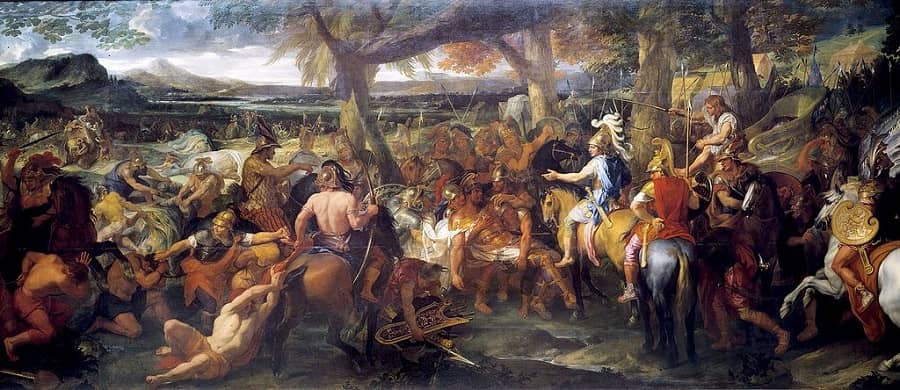

Alexander knew that a direct approach had little chance of success and tried to find alternative fords. The Jhelum River was deep and fast enough that any attempt at a crossing would probably doom the attacking force. In the spring of 326 BC, Porus drew up on the south bank of the Jhelum River to repel any crossing. Porus awaits the attack of Alexander July 326 BC.Īlexander fixed his camp in the vicinity of the town of Jhelum on the right banks of the river. According to historian Peter Green, Porus's performance in the battle out-classed both Memnon of Rhodes and Spitamenes. Although he lost the battle, he became the most successful recorded opponent of Alexander. Porus had to defend his kingdom and chose the perfect spot to check Alexander's advance. Alexander could not afford to show any weakness if he wanted to keep the loyalty of the already subdued Indian princes. To leave such a strong opponent at his flanks would have endangered any further exploits. MotivesĪlexander had to subdue King Porus in order to keep marching east. They combined their forces against Taxiles's neighbour, the King of Hydaspes, King Porus, who had chosen to spurn Alexander's command for him to surrender and was preparing for war. In early spring of the next year, Alexander formed an alliance with Taxiles (local name Ambhi), the King of Taxila.

Here, the Hindu clans of Hindu Kush gave Alexander's army the toughest opposition they had faced, but Alexander still emerged victorious, despite being outnumbered, depending on the source, somewhere between 3:1 and 5:1. The primary Greek column entered the Khyber Pass, but a smaller force under the personal command of Alexander went through the northern route, taking the fortress of Aornos (modern-day Pir-Sar) along the way-a place of mythological significance to the Greeks as, according to legend, Herakles had failed to occupy it when he campaigned in India. During this battle, Alexander suffered heavy losses compared to his earlier victories.

Whilst possessing a much larger army, at the battle, an estimated 40,000 infantry and 5,000 cavalry crossed the river in time to engage the enemy. After fortifying Bactria with 10,000 men, Alexander commenced his invasion of India through the Khyber Pass. BackgroundĪfter Alexander defeated the last of the Achaemenid Empire's forces under Bessus and Spitamenes in 328 BC, he began a new campaign to further extend his empire towards India in 327 BC. The identification of the battle site near modern Jalalpur/Haranpur is certainly erroneous, as the river (in ancient times) meandered far from these cities. For the moment, the most plausible location is just south of the city of Jhelum, where the ancient main road crossed the river and where a Buddhist source mentions a city that may be Nicaea. Any attempt to find the ancient battle site is complicated by considerable changes to the landscape over time. Alexander later founded the city of Nicaea on the site this city has yet to be discovered. The battle took place on the east bank of the Hydaspes River (now called the Jhelum River, a tributary of the Indus River) in what is now the Punjab Province of Pakistan. The battle is historically significant because it resulted in the exposure of ancient Greek political and cultural influences to the Indian subcontinent, yielding works such as Greco-Buddhist art, which continued to have an impact for many centuries. The fierce resistance put up by Porus and his men won the respect of Alexander who, after the battle, asked Porus to become one of his satraps. Although victorious, it was also the most costly battle fought by the Macedonians. Large areas of Punjab were absorbed into the Alexandrian Empire, and the defeated, dethroned Porus became reinstated by Alexander as a subordinate ruler.Īlexander's decision to cross the monsoon-swollen river-despite close Indian surveillance-in order to catch Porus's army in the flank has been referred to as one of his "masterpieces". The battle resulted in a Greek victory and the surrender of Porus. It took place on the banks of the Jhelum River (known to the ancient Greeks as Hydaspes) in the Punjab region of the Indian subcontinent (modern-day Punjab, Pakistan).

The Battle of the Hydaspes was fought between Alexander the Great and King Porus in 326 BCE.


 0 kommentar(er)
0 kommentar(er)
